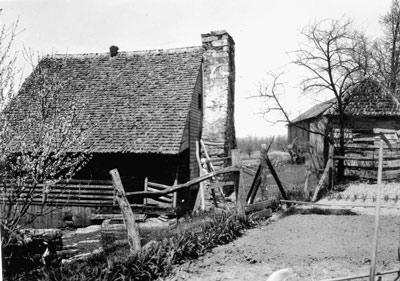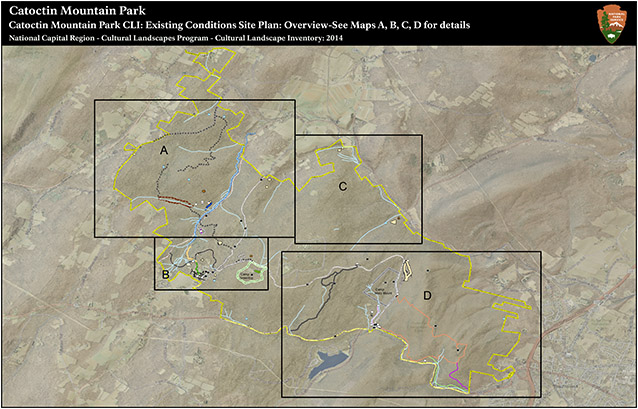Catoctin Mountain Park is a 5,770-acre park in the northwest corner of Frederick County, Maryland managed by the NPS for public recreation and nature conservation. The two cabin camps in the park, Camp Misty Mount and Camp Greentop, are component landscapes. They are situated along Park Central Road, a single public-access road that winds through the lower portion of the park.
Federal ownership of this land originated with two laws in 1933, the Emergency Conservation Work Act and the National Industrial Recovery Act. Together, they ushered in the economic and social recovery programs known collectively as the “New Deal.”

Carol M. Highsmith, Library of Congress
In addition to the group camps, facilities within the park include an educational and resource management area, called Camp Round Meadow; a visitors center; a park administrative building; vehicular and tent camp sites; picnic areas; park maintenance facilities; and a network of hiking trails and interpretive sites. The mountainous terrain is rocky and forested, bisected by creeks and their tributaries and threaded with hiking trails.
In 1954, the State of Maryland was given the southern half of the area, now Cunningham Falls State Park. The northern section, which contains the majority of the facilities developed during the New Deal years, was retained as a unit of the NPS and renamed Catoctin Mountain Park.

NPS / Catoctin Mountain Park
The Catoctin Mountain Park landscape bears the imprint of two historic periods. The first (1770-1903) is the span of years during which the landscape was utilized by the nearby iron furnace, an example of the nation’s early iron industry. In the second significant period (1934-1942), a portion of the mountain landscape was recast for recreation and conservation when the federal government developed it as a Recreational Demonstration Area (RDA), one of about 40 nationwide. Catoctin Mountain Park played a significant role in rural industrial and settlement patterns, as well as the nationwide New Deal programs and park architecture.
Three camps, a headquarters area, and visitors contact area were built and designed in the Rustic style envisioned by 1930s NPS architects. The camps were opened for several summers prior to WWII. In 1941, the third camp was renovated as a retreat for President Franklin D. Roosevelt, called Camp David, and the entire RDA was closed for the duration of the war. Catoctin RDA reopened in the 1940s, and Camp Misty Mount and Camp Greentop have been in operation ever since.

NPS / Catoctin Mountain Park
The camps are used by organized groups, just as was originally intentioned. One of the camps has served the same organization for children with disabilities since it first opened. National Register recognition for Catoctin Mountain Park includes historic district listings for each of the two camps (Misty Mount and Greentop) and a multiple property listing for the Emergency Conservation Work (ECW) architecture.
The park does not contain many buildings or structures that reflect the first period of the significance. However, it does have integrity in other landscape features that leave a fine imprint of this former time.
The landscape has generally high integrity for the second period, and nearly all the facilities within the two cabin camps remain intact. The park road and trails also remain, though they have been shifted in some locations. The natural landscape features of the mountain that have attracted human use of the area through these successive periods have changed little.

NPS
Quick Facts
- Cultural Landscape Type: Designed / Vernacular
- National Register Significance Level: National
- National Register Significance Criteria: A,C
- Periods of Significance: 1770-1903; 1934-1942
Landscape Links
Last updated: October 7, 2021
